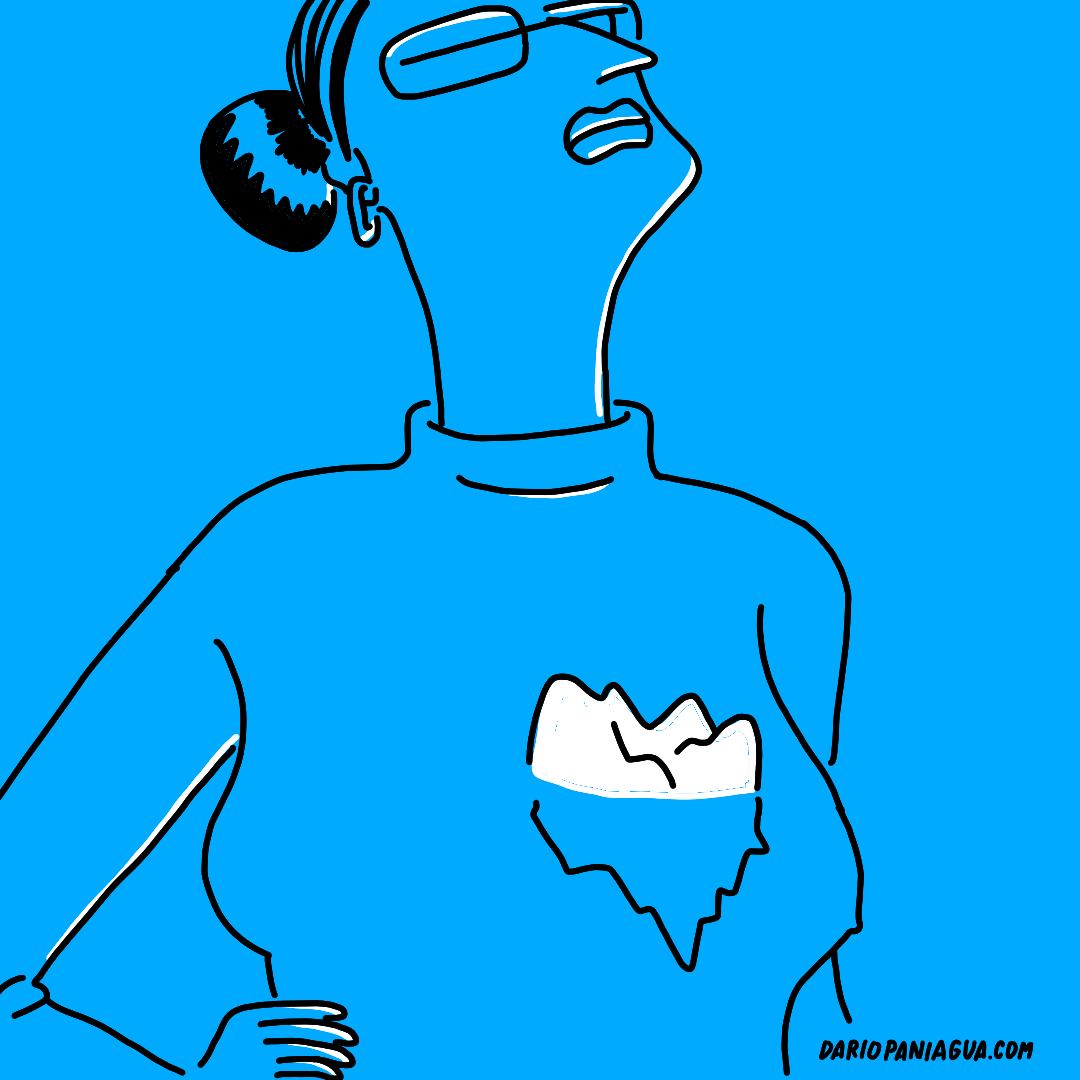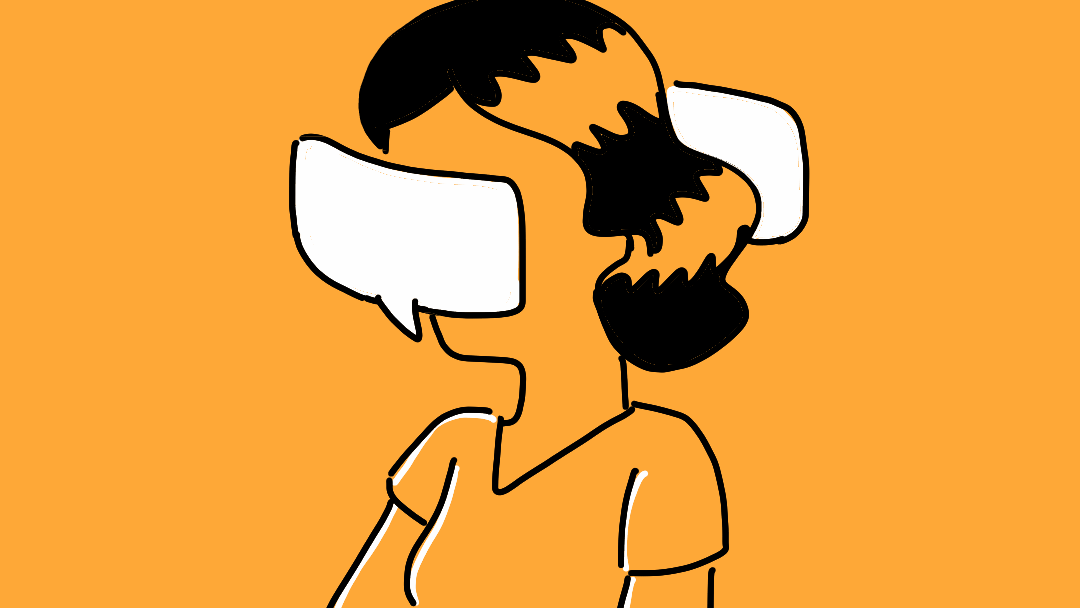Out-of-Context Technique: Iceberg and Heart Substitution in Visual Metaphors

Remember, a quick way to apply the out-of-context technique is through substitution.
You remove one element and replace it with another that seems unrelated, but a connection is established.
In this case, the iceberg resembles the shape of a heart.When you place things out of context through substitution, the replaced element gains new meaning.
Here, the heart is no longer just an organ, it becomes a trait of the person’s personality.
Remove the Key Element: Discovering Depth in Visual Metaphors

Remove the Key Element!
Many objects have a defining feature that makes them instantly recognizable.
For a door, it might be the handle.
For a plane, its wings.
For a chair, its legs.
We could go on listing examples for nearly every object we know.
Obviously, for a cage, it’s the bars.
But what happens when you take them away? In this case, two things happen:
1) We still recognize it as a cage. Even without seeing the bars, our brain fills in the missing shapes, and other elements help us understand what it is.
2) We give it a new meaning. Removing something doesn’t necessarily mean subtracting. It can mean adding, enriching.
A cage without bars conveys a much deeper meaning than just a simple cage.
Thank you,
Dario Paniagua
Visual Thinkers Coach
Unlocking the Power of Cages as Metaphors

Cages come in many forms: square or cylindrical. These two geometric shapes are particularly prevalent, appearing in countless objects around us, often unnoticed until we take a closer look.
When we sharpen our powers of observation, we can transform almost anything into a metaphorical cage.
Every object, idea, or structure has the potential to represent constraints.
The narratives you can build around the concept of a cage are truly limitless.
A cage can symbolize external pressures that mirror the constraints we feel internally, whether it’s a societal norm, a personal fear, or an unspoken rule.
Cages can evoke emotions that range from a sense of safety and protection to feelings of restriction or entrapment.
But here’s the most fascinating part: any image, no matter how ordinary, can serve as a container to "cage" a thought, a feeling, or a concept.
A birdcage can hold freedom, a jar can enclose chaos, or a fence might frame a fragile dream.
With the right framing, everyday...
Making Classic Icons Stand Out in Visual Thinking

The 'mountain path' is another classic image frequently used in visual thinking.
But what happens when we incorporate multiple clichéd icons into the same scene?
The key to standing out is to blend them into a cohesive story format.
But what do I mean by standing out? Standing out from what? From the risk of your visual image being overlooked, ignored, and left your message unread.
When an image becomes too familiar through repetition, it loses its impact.
Visual storytelling is what gives our images context and makes our visual message captivating to the viewer.
Let's analyze some of the elements we see here, that help create a disruptive scene_
- Playing with sizes (making things appear dramatically large or small).
- Blend or join: merging one element with another, like transforming a speech bubble into a mountain scene.
- Substitution: replacing part of the speech bubble with the mountain peak.
There are numerous techniques available for crafting metaphors that enrich t...
Conveying Stories Through Visual Thinking

A speech bubble used in a generic manner conveys a generic message.
Humans constantly communicate. But communication isn't always two-way.
We don't always listen, and we don't always want to listen.
How do we convey this in visual thinking?
In the context of a story and to create a story, what better way than to create a setting?
Any setting works for telling stories.
How many elements are speaking here?
The man?
The elderly woman?
The pigeon?
What are they each saying?
Would you like to guess what they are talking about or just suggest a keyword for the whole scene?
If you want to learn to tell stories through visual thinking, I can teach you using visual metaphors. Leave your details on my site, and I'll notify you as soon as enrollment opens.
Thank you,
Dario Paniagua
Visual Thinkers Coach
Transform Clichés into Metaphors

There's a really simple way to turn a cliché into a metaphor.
It's just a matter of giving it a different appearance.
Can you change its color?
Can you draw it differently but still make it recognizable?
It's like giving a dual meaning to the same image.
In this case, the speech bubble even works to talk about something that will happen in the future. Someone's about to blow up.
The viewer imagines what will happen next, even if it's not depicted.
The sequence happens in people's heads even without us drawing it.
These are the things I teach in the first Membership where you can learn Visual Thinking through metaphors without resorting to clichés.
What keyword or short phrase would you use for this image?
Thank you
Dario Paniagua
Unlocking Creativity: The Power of Visual Metaphors in Interpretation

Every hole, every empty space can be a shape we can play with.
Play what? We're playing with giving it a new shape and a new meaning.
But what's going on in this image? Everything and nothing.
This image could be full of meaning or have absolutely no meaning at all depending on who looks at it and how they interpret it.
When we want to anchor what we want to say, we use keywords close to an image.
On the other hand, when we want people to assign their own meaning to an image, we don't associate any phrase or word, and what people will interpret will depend on two things: Their personal past experiences and their culture of origin.
By the way, what keyword or short sentence would you connect to this image?
These are the types of tips and knowledge we learn in the first Membership that teaches you Visual Thinking through non-cliché metaphors.
You can enroll on this site for a limited time, and use the early bird code MAYBIRDS to access a discount.
Thank you
Dario Paniagua
Visual Thinkers Co...
Metaphors: The Impact of Surprises

Each drawing we create is like a tiny storybook.
Every person, and every action we draw tells a story.
But what really grabs your attention is when things take an unexpected turn.
In Visual Thinking, these unexpected twists are what we call disruptions.
Imagine this: two people are talking in a drawing. It seems simple, right? But what makes it interesting is the disruption — that surprising moment that makes the story more exciting.
Disruptions in art Visual Thinking happen in different ways. It might be a surprising action, something that happens unexpectedly.
Or it could be a surprising setting, a background that's different from what you'd expect. For example, think about a scene where one person asks another for help.
The disruption isn't the request for help, but the surprising part is that the other person says no.
Disruptions aren't just about actions. The setting is important too.
Picture a place where two speech bubbles come together, makin...
Self-inquiry: Uncovering the Secrets of Clichés.

A simple question about our clichés can open up a world of possibilities to explore.
What lies behind a cliché?
What does it hide or cover?
These were the questions I asked myself to create this metaphor, and they are exactly the same questions you can ask yourself every time you encounter an element that you continue to repeat.
Why is self-inquiry crucial?
Because the responses you uncover will become short visual stories or messages, effectively transforming any cliché into a potent metaphor.
Unlocking the Power of Self-Inquiry
When creating metaphors, self-inquiry is the key that opens the door to creative symbolism. It prompts us to dig deeper, to question the surface, and to make emerge hidden visual gems.
From Cliché to Compelling Tale
Asking these questions not only leads to a deeper understanding but also uncovers the stories waiting to be told. Each response becomes a building block for narratives that resonate, messages that stick, and metaphors that truly come alive...
The Power of Embracing Absurdity

The best way to unlock creativity and craft powerful metaphors is by embracing absurdity.
Consider this: Visual metaphors are rooted in the realm of the impossible. They encapsulate scenarios and elements that defy logic, inviting us to look beyond the confines of the rational world.
It's precisely this characteristic that often leaves us intrigued, capturing our attention.
Starting from a purely logical standpoint can be a stumbling block to the process.
A visual metaphor always involves impossible situations. That's why we struggle to create them if we approach them with a rational thinking.
If we begin from a logical approach, it becomes challenging to break free from conventional solutions.
A Practical Exercise: Embrace Absurdity
-
Imagine any situation without the constraint of making perfect sense.
-
Sketch it! (Sketchnoting your dreams can be an excellent training exercise for inspiration.)
-
Connect your picture to a keyword or a short sentence.
...

